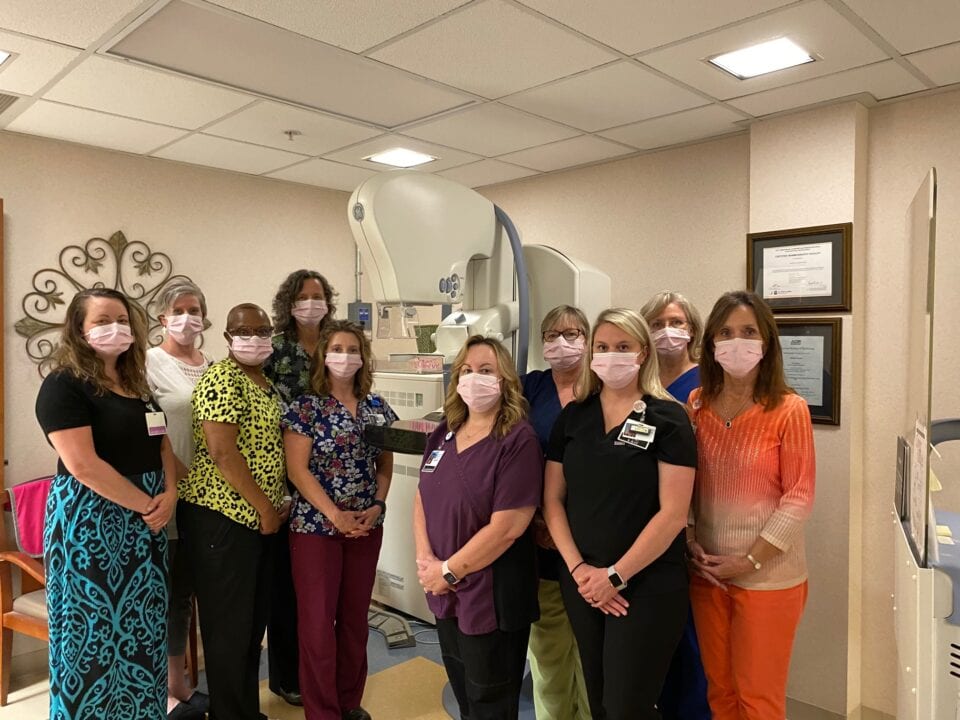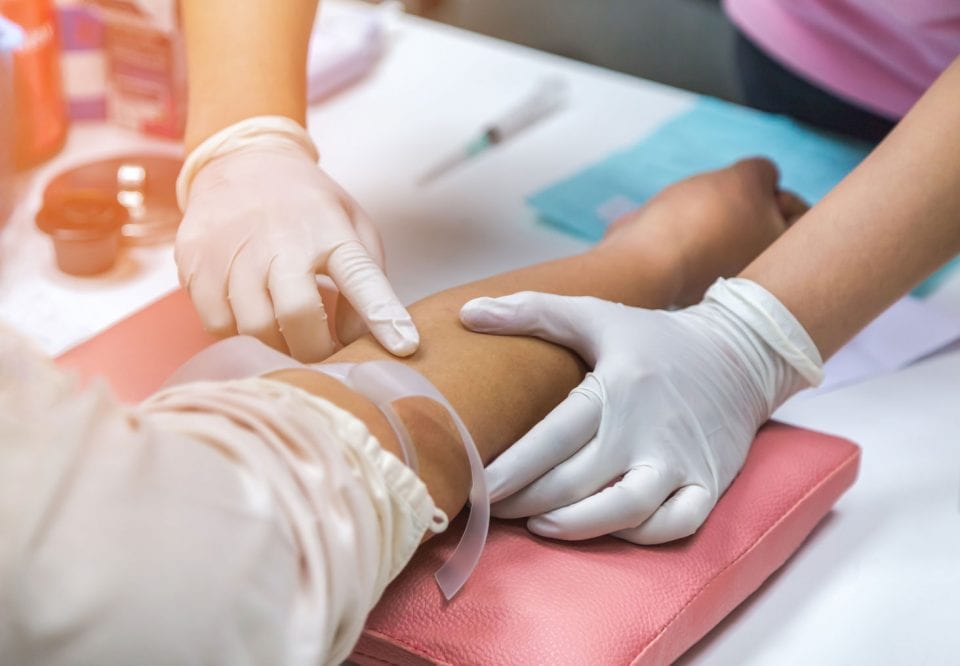Nuclear Medicine
Pinehurst Surgical Clinic Imaging Center is ACR (American College of Radiology) Accredited in Nuclear Medicine
We offer specialized nuclear medicine expertise to evaluate organs, bones and tissues. Nuclear Medicine is a safe and trusted modality that uses low-dose radiation to provide information about both structure and function of anatomy. It can identify abnormalities before they would be apparent with other diagnostic tests.
Common Nuclear Medicine Scans
Bone (Musculoskeletal) Scans
- Evaluation of bone trauma and fractures
- Evaluation of prosthetic loosening
- Detection of osteomyelitis, arthritis and avascular necrosis
- Detection of spondylolysis and reflexive sympathetic dystrophy
- Localization of bone tumors
- Staging of neoplastic disease (e.g., breast and prostate cancer)
- Evaluation of bony pain and/or response to therapy
Hepatobiliary and Gastric Emptying (Both are Gastrointestinal Studies)
- Evaluation of acute or chronic cholecystitis
- Detection of gallbladder disease
- Quantification of gallbladder ejection fraction
- Evaluation of suspected biliary tract disorders
- Detection of common bile duct obstruction
- Evaluation of gastric motility following response to
Renal / Kidney Scans (Genitourinary)
- Evaluation of renal flow and function
- Detection of horseshoe and pseudohorseshoe kidney
- Detection of acute pyelonephritis
- Lasix renogram – detection of renal obstruction and diagnosis of hydronephrosis
How should I prepare?
- You may be asked to wear a gown during the exam or you may be allowed to wear your own clothing.
- Women should always inform their physician or technologist if there is any possibility that they are pregnant or if they are breastfeeding.
- You should inform your physician and the technologist performing your exam of any medications you are taking, including vitamins and herbal supplements. You should also inform them if you have any allergies and about recent illnesses or other medical conditions.
- Jewelry and other metallic accessories should be left at home if possible, or removed prior to the exam because they may interfere with the procedure.
- You will receive specific instructions based on the type of scan you are undergoing.
- In some instances, certain medications or procedures may interfere with the examination ordered.
What does the equipment look like?
The gamma camera detects radioactive energy that is emitted from the patient’s body and converts it into an image. The gamma camera does not emit any radiation. The gamma camera is composed of radiation detectors, called gamma camera heads, which are encased in metal and plastic and most often shaped like a box, attached to a round circular shaped gantry. The patient lies on the examination table which slides in between the parallel gamma camera heads which are suspended over the examination table and located beneath the examination table.
How does the procedure work?
With ordinary examinations, an image is made by passing x-rays through the patient’s body. In contrast, nuclear medicine procedures use a radioactive material, called a radiopharmaceutical or radiotracer, which is injected into the bloodstream. This radioactive material accumulates in the organ or area of your body being examined, where it gives off a small amount of energy in the form of gamma rays. Special cameras detect this energy, and with the help of a computer, create pictures offering details on both the structure and function of organs and tissues in your body.
How is the procedure performed?
- The length of time for nuclear medicine procedures varies greatly, depending on the type of exam. Actual scanning time for nuclear imaging exams can take from 20 minutes to several hours
- It can take anywhere from several seconds to several hours for the radiotracer to travel through your body and accumulate in the organ or area being studied. As a result, imaging may be done immediately or a few hours after you have received the radioactive material.
- You will be positioned on an examination table. If necessary, a nurse or technologist will insert a catheter into a vein in your hand or arm.
- Nuclear medicine imaging is usually performed on an outpatient basis,
- Depending on the type of nuclear medicine exam you are undergoing, the dose of radiotracer is then injected intravenously,
- When it is time for the imaging to begin, the camera or scanner will take a series of images. The camera may rotate around you or it may stay in one position and you will be asked to change positions in between images. While the camera is taking pictures, you will need to remain still. In some cases, the camera may move very close to your body. This is necessary to obtain the best quality images. If you are claustrophobic, you should inform the technologist before your exam begins.
- When the examination is completed, you may be asked to wait until the technologist checks the images in case additional images are needed. Occasionally, more images are obtained for clarification or better visualization of certain areas or structures. The need for additional images does not necessarily mean there was a problem with the exam or that something abnormal was found, and should not be a cause of concern for you
What will I experience during and after the procedure?
- Except for intravenous injections, most nuclear medicine procedures are painless and are rarely associated with significant discomfort or side effects.
- When the radiotracer is given intravenously, you will feel a slight pin prick when the needle is inserted into your vein for the intravenous line. When the radioactive material is injected into your arm, you may feel a cold sensation moving up your arm, but there are generally no other side effects.
- It is important that you remain still while the images are being recorded. Though nuclear imaging itself causes no pain, there may be some discomfort from having to remain still or to stay in one particular position during imaging.
- Unless your physician tells you otherwise, you may resume your normal activities after your nuclear medicine scan.
Who interprets the results and how do I get them?
A radiologist or other physician who has specialized training in nuclear medicine will interpret the images and forward a report to your referring physician.
What are the benefits vs. risks?
Benefits
- Nuclear medicine examinations provide unique information—including details on both function and anatomic structure of the body that is often unattainable using other imaging procedures.
- For many diseases, nuclear medicine scans yield the most useful information needed to make a diagnosis or to determine appropriate treatment, if any.
- Nuclear medicine is less expensive and may yield more precise information than exploratory surgery.
- Nuclear medicine offers the potential to identify disease in its earliest stage, often before symptoms occur or abnormalities can be detected with other diagnostic tests
Risks
- Because the doses of radiotracer administered are small, diagnostic nuclear medicine procedures result in relatively low radiation exposure to the patient, acceptable for diagnostic exams. Thus, the radiation risk is very low compared with the potential benefits.
- Allergic reactions to radiopharmaceuticals may occur but are extremely rare and are usually mild. Nevertheless, you should inform the nuclear medicine personnel of any allergies you may have or other problems that may have occurred during a previous nuclear medicine exam.
- Women should always inform their physician or radiology technologist if there is any possibility that they are pregnant or if they are breastfeeding.
Pinehurst Surgical Clinic is a multi-specialty clinic comprised of ten specialty centers located in a state-of-the-art surgical facility in Pinehurst, NC. We also have six additional locations in Laurinburg, Hamlet, Raeford, Rockingham, Sanford and Troy and serve patients in Southern Pines, Fayetteville and surrounding areas throughout North Carolina, South Carolina, and beyond.



